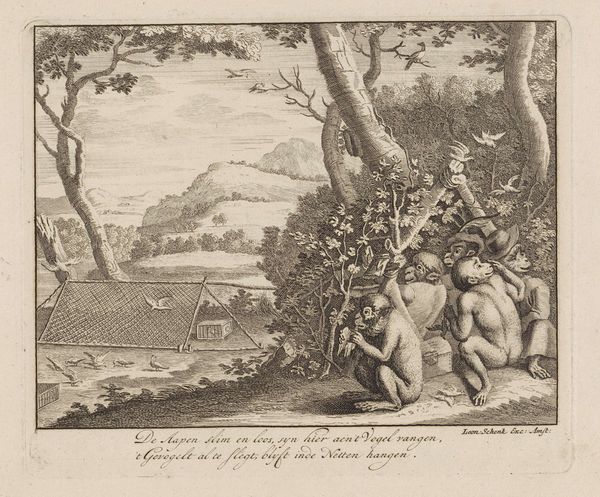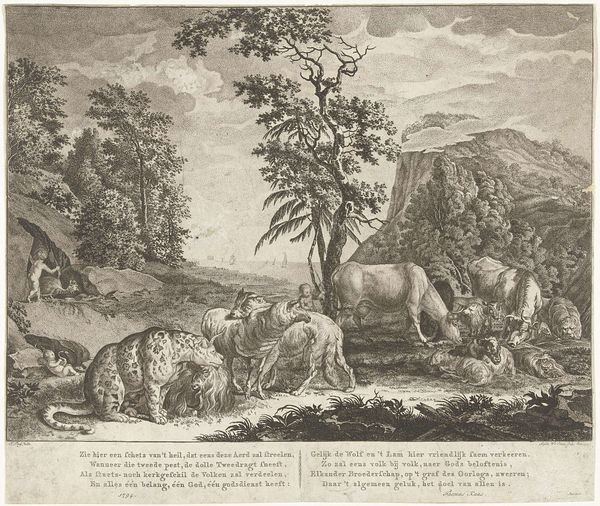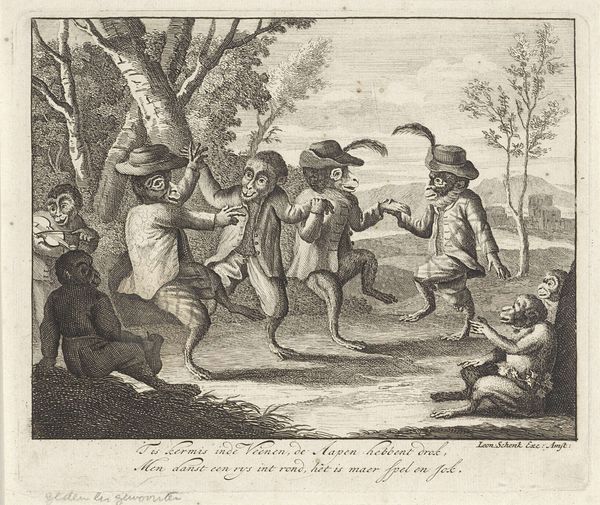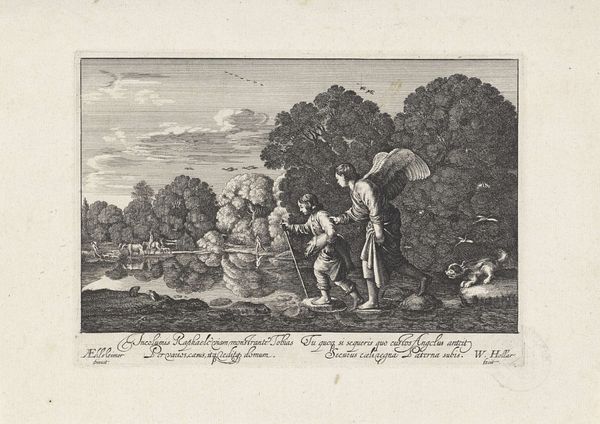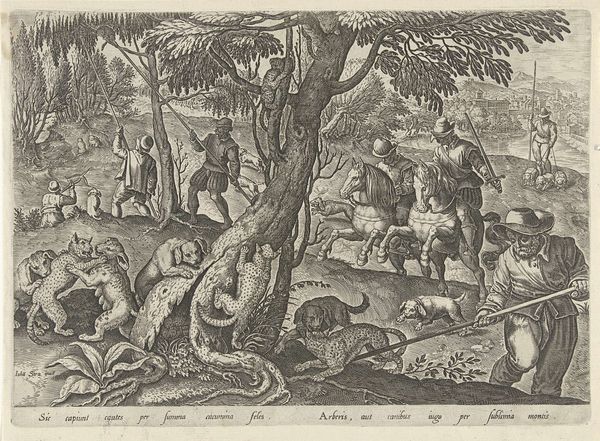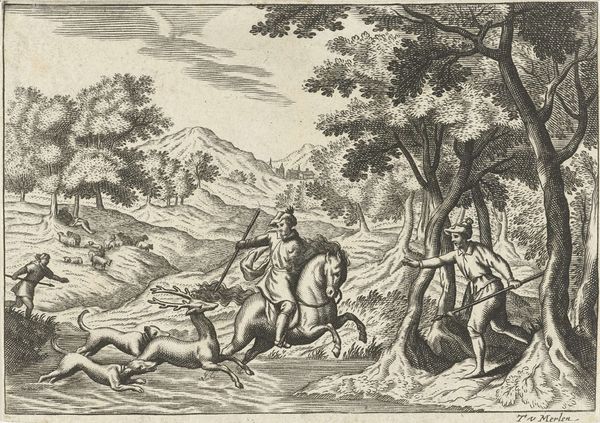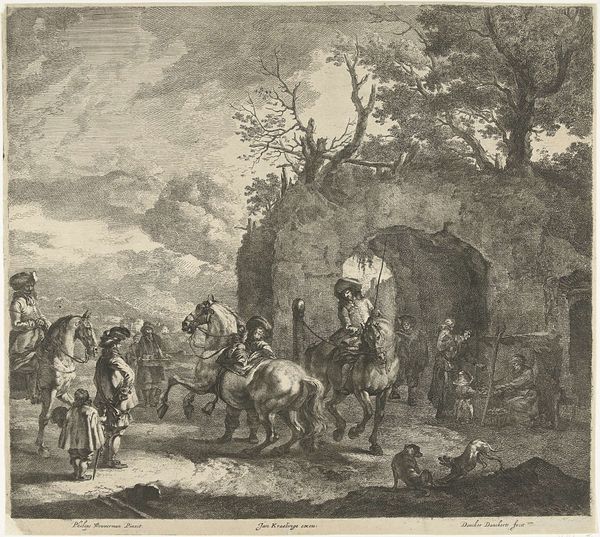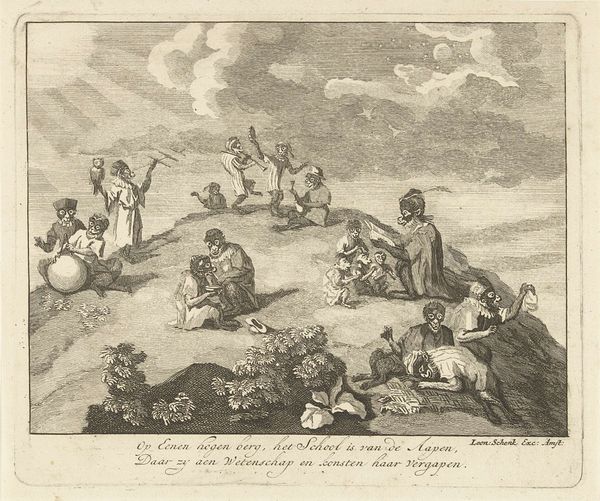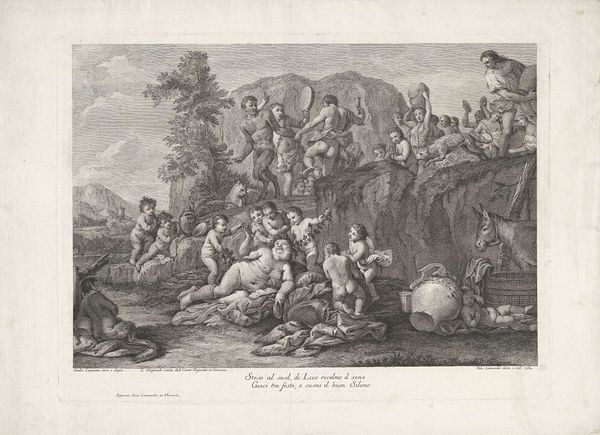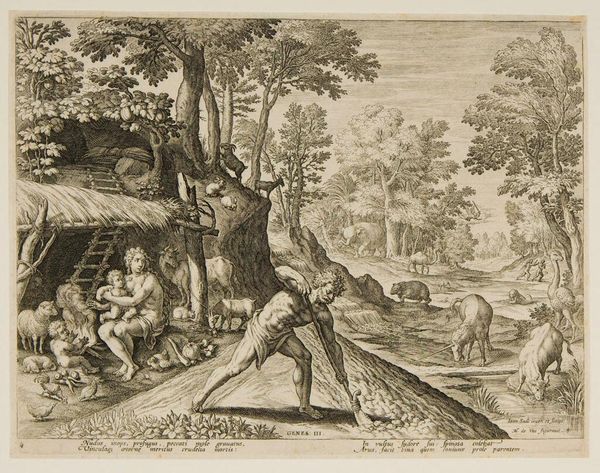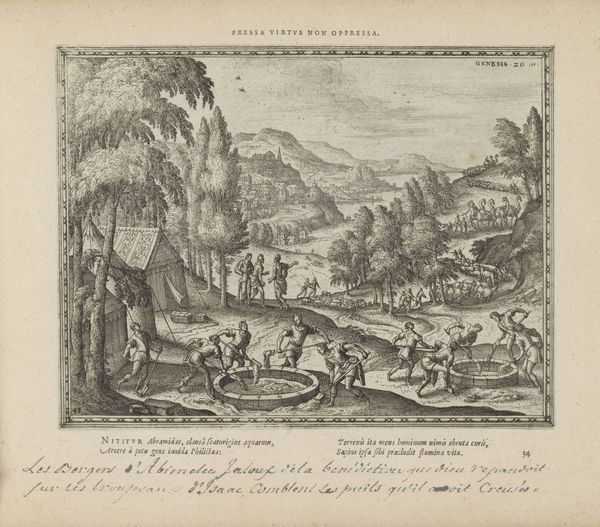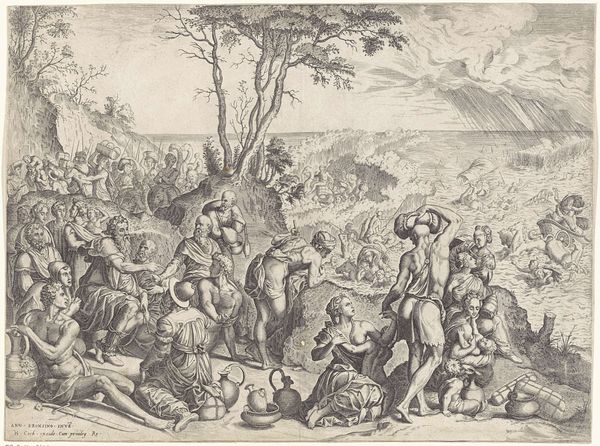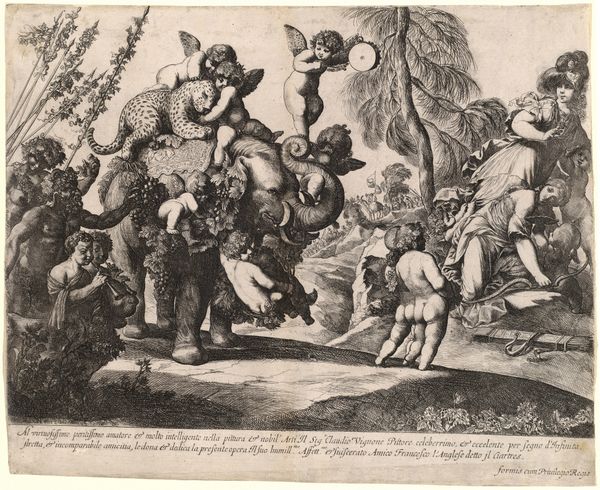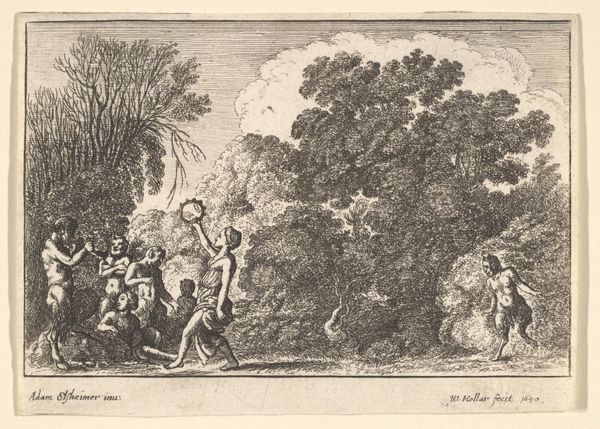
print, engraving
#
baroque
# print
#
figuration
#
genre-painting
#
engraving
Dimensions: height 165 mm, width 196 mm
Copyright: Rijks Museum: Open Domain
Editor: This engraving by Leonard Schenk from 1720, titled "Apen spelen het handje-plak-spel," is fascinating. The contrast between the detailed figures of the monkeys and the looser rendering of the landscape really strikes me. What do you see in this print, focusing on its composition and technique? Curator: Indeed, the interplay of textures and forms invites close scrutiny. Notice how Schenk employs the stark lines of engraving to delineate the monkeys, lending them a near-sculptural quality. Contrast this with the background; observe how line density creates depth and atmospheric perspective, drawing the eye toward the distant mountains. Are you seeing the balanced distribution of light and shadow within the composition, how that serves to create focus? Editor: Yes, the high contrast areas around the monkeys really pop. Is there something in particular with how these lines and the figures' composition inform any semiotic meanings behind the play itself? Curator: The seemingly simple scene allows a sophisticated organization. Consider the semiotic structure of the grouping. A cluster of primates actively engage with a pair in human children's clothing within their "game" circle, which can be viewed to analyze the interplay between the primate 'natural' state vs. the costumed "human" children and their respective gazes. Does that strike you as relevant? Editor: Absolutely. It’s a complex set of relations depicted through a formal, controlled technique. Curator: Precisely. The meticulous craftsmanship juxtaposed with the subject matter invites deeper contemplation about artifice and representation. Considering our formal reading, can you summarize in short the implications of this image's composition? Editor: That the formal elements accentuate and enable critical cultural questions related to identity and social relations, a semiotic system in black and white? Thank you for such enlightening commentary. Curator: You're very welcome. Paying such close attention to how images are constructed enhances our awareness and understanding of art in this time period, and artmaking practices more generally.
Comments
No comments
Be the first to comment and join the conversation on the ultimate creative platform.
